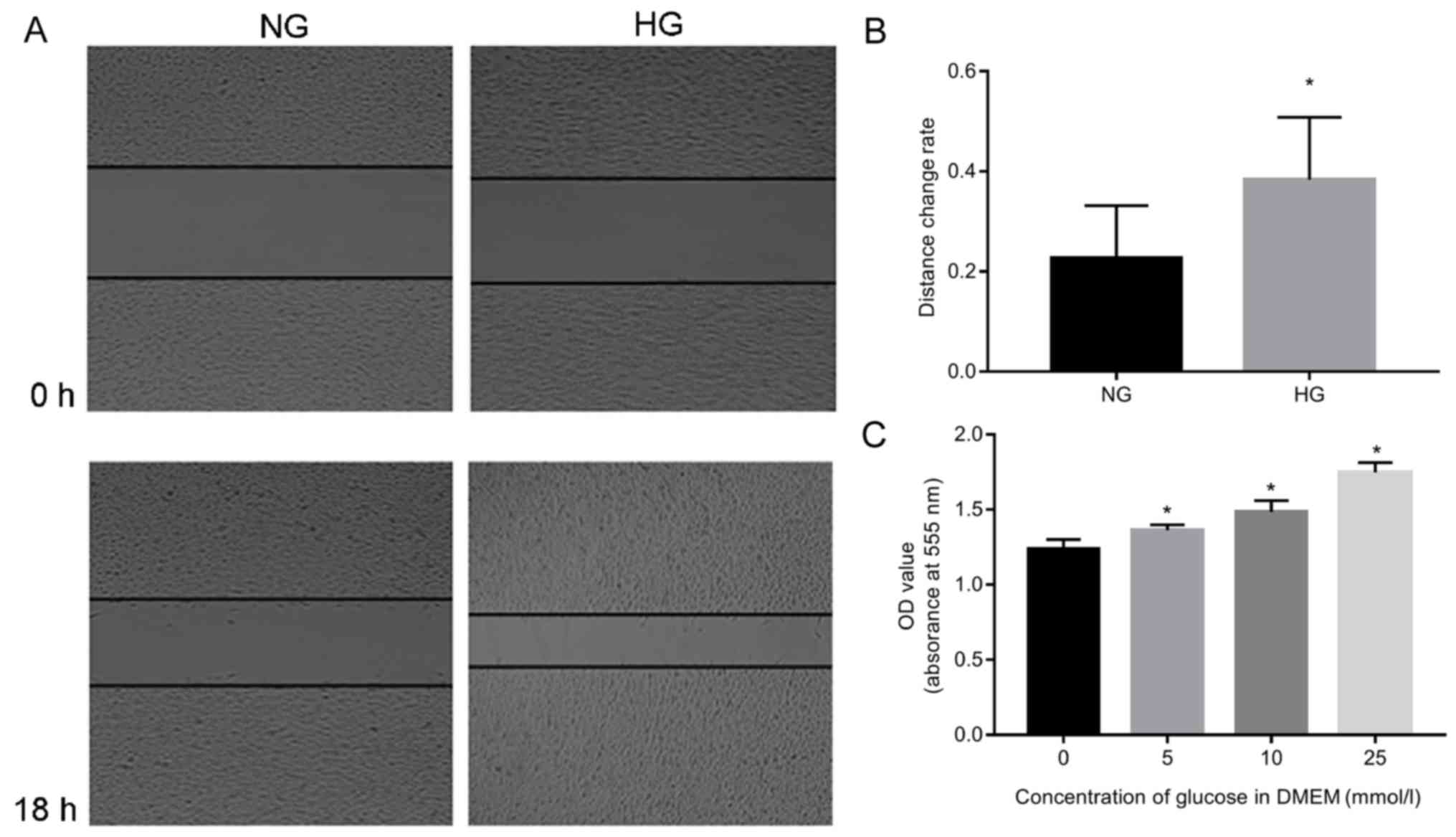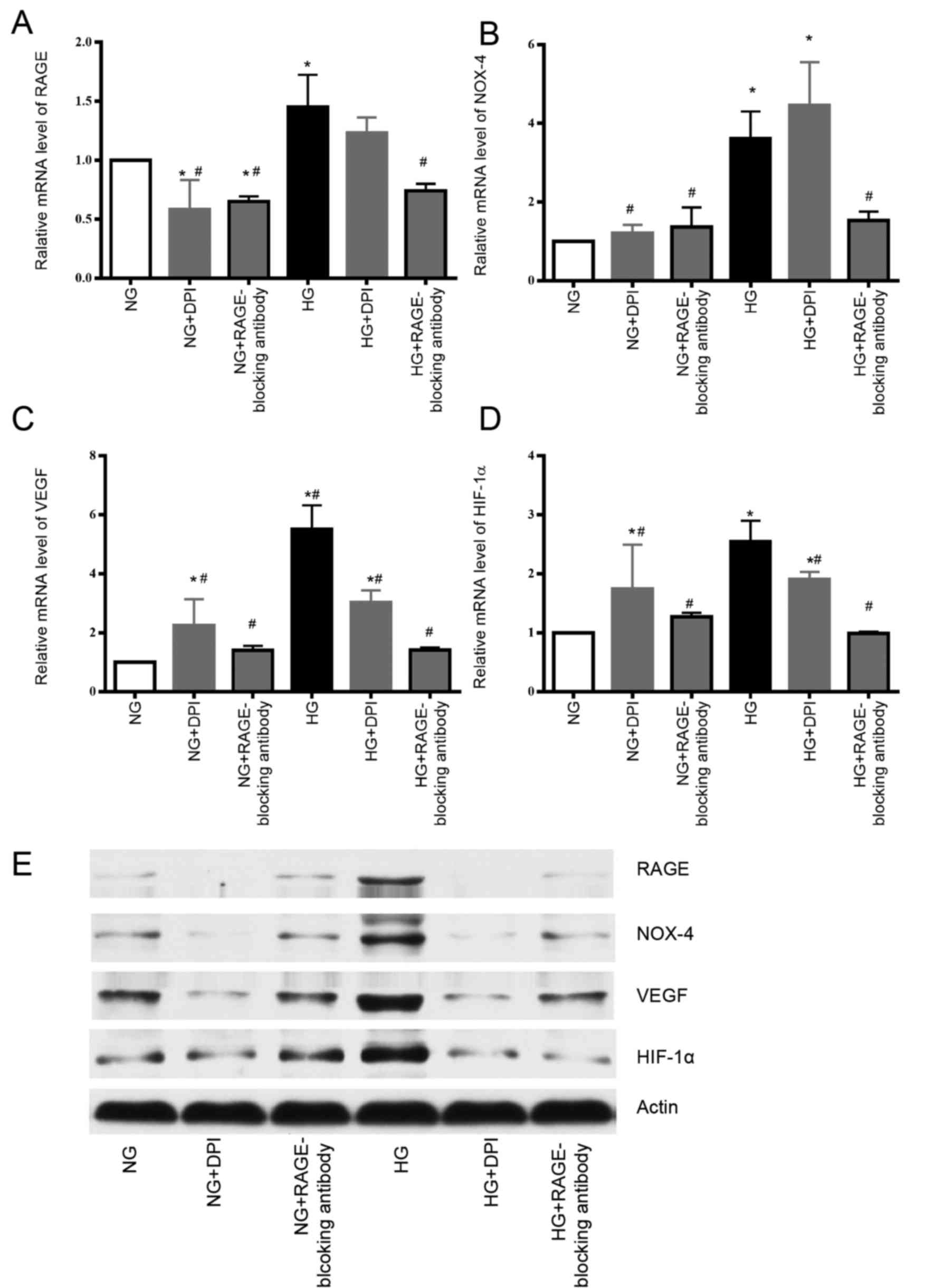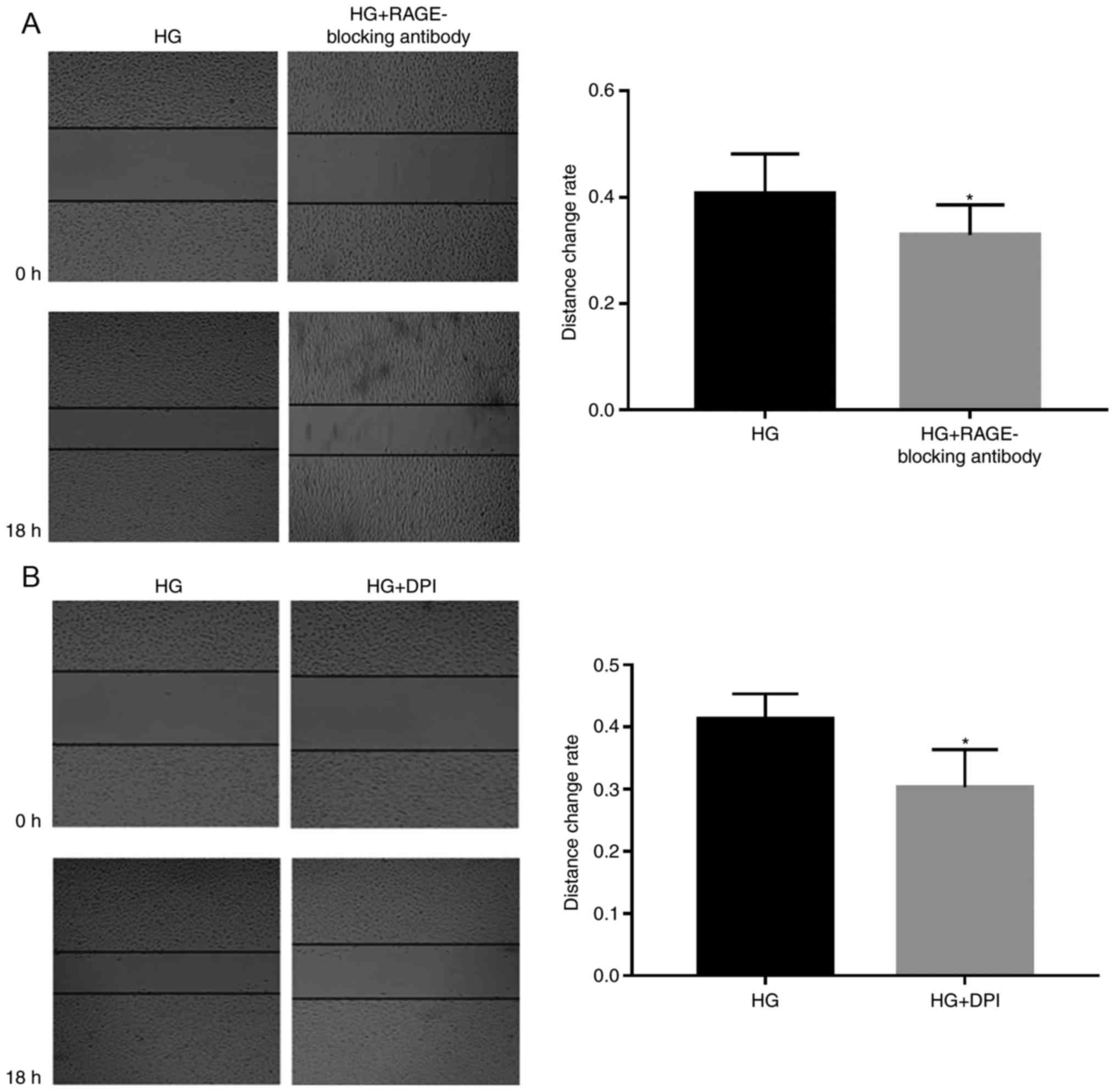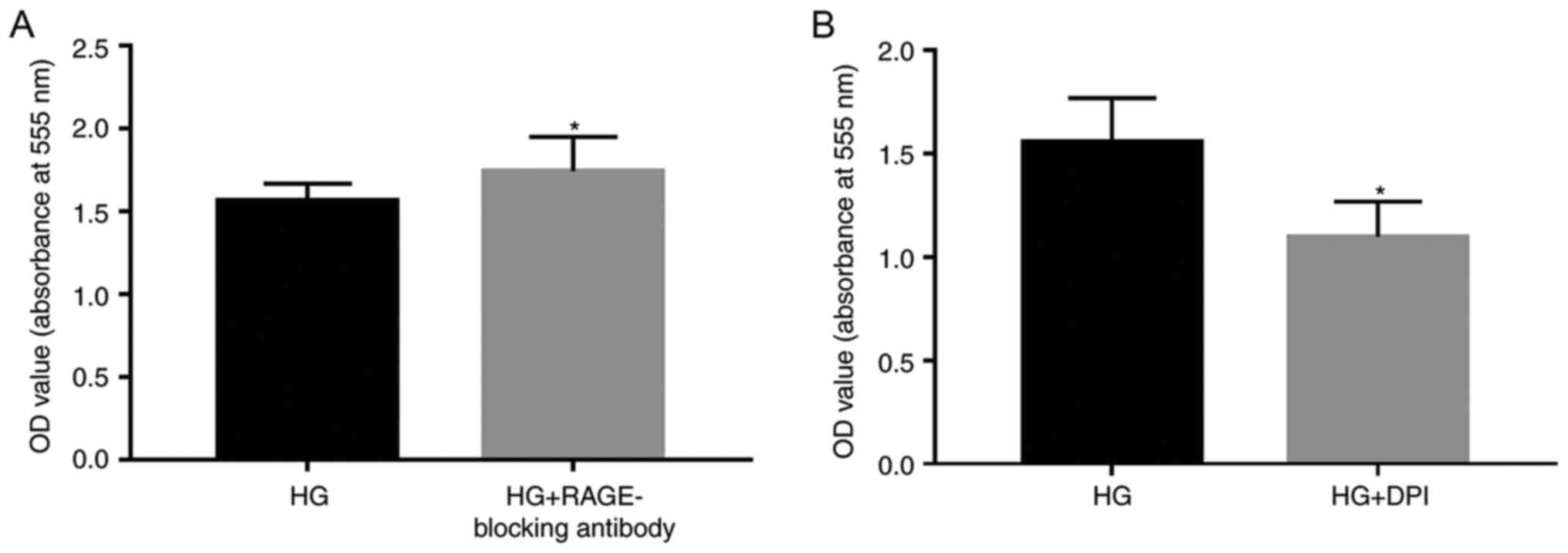High glucose promotes tumor cell proliferation and migration in lung adenocarcinoma via the RAGE‑NOXs pathway
Corrigendum in: /10.3892/mmr.2018.9555
- Authors:
- Published online on: April 23, 2018 https://doi.org/10.3892/mmr.2018.8914
- Pages: 8536-8541
Metrics: Total
Views: 0 (Spandidos Publications: | PMC Statistics: )
Total PDF Downloads: 0 (Spandidos Publications: | PMC Statistics: )
Abstract
Over the past few decades, it has been demonstrated that hyperglycemia can promote lung carcinoma growth, potentially through significantly increased glucose metabolism; however, the underlying mechanism remains to be fully elucidated. In the present study, treatment with a high concentration of glucose (HG) significantly promoted the proliferation and migration of A549 cells. Receptor for advanced glycation end‑products (RAGE) has previously been demonstrated to be associated with diabetes mellitus and oxidative stress, and nicotinamide adenine dinucleotide phosphate oxidases (NOXs) are considered to be initiating factors of oxidative stress. Therefore, an MTT assay, wound‑healing assay, quantitative polymerase chain reaction and western blotting assays were used to analyze the RAGE‑NOX‑4 pathway and to determine its potential involvement in glycometabolism‑associated tumorigenesis. The present study demonstrated that HG could increase the protein expression of RAGE and NOX‑4, whereas the inhibitor of RAGE (anti‑RAGE antibody) could suppress this effect. Futhermore, the inhibitor of NOX [diphenyl iodonium chloride (DPI)] could reduce the protein expression of RAGE and NOX‑4. Furthermore, inhibition of RAGE led to the downregulation of vascular endothelial growth factor (VEGF) and hypoxia‑inducible factor‑1α (HIF‑1α), thus suggesting that HG may influence angiogenesis and tumor metabolism via the RAGE‑NOXs pathway. The present study also demonstrated that the RAGE‑blocking antibody downregulated NOX‑4 and subsequently reduced the production of downstream inflammatory factors, whereas DPI did not affect the mRNA expression of RAGE but it did reduce the protein level of RAGE and then attenuate the inflammatory response. These results indicated that inhibition of RAGE or NOXs may promote the reduced expression of VEGF and HIF‑1α, and NOXs may be downstream targets of RAGE, thus indicating a HG‑RAGE‑NOXs‑VEGF/HIF‑1α association. Furthermore, the results indicated that HG may serve a role in the development of lung adenocarcinoma, mediated by the RAGE‑oxidative stress pathway; therefore, the regulation of this glucose‑associated pathway may be a promising novel direction for oncotherapy. However, while certain antidiabetic agents have been verified to exert inhibitory effects on tumor growth, they can also have long‑term adverse effects on the body, which may limit the value of these drugs as anticancer treatments. In conclusion, the present study suggested a novel attempt to suppress glucose‑induced tumor growth using a RAGE inhibitor such as soluble RAGE while avoiding the risk of glucose fluctuation.













